Sitting on a bench at the highest point of Oyster Shell Park, I bask in the sight and sound of frequent trains on the Walk Bridge. Crushed shells are dropped along the park’s maintained paths, which spiral like a shell. 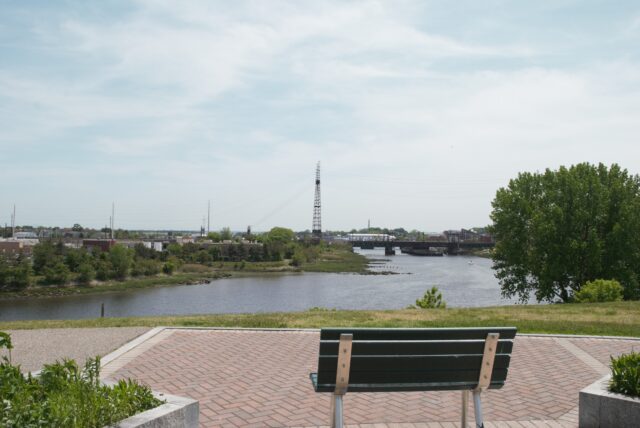
This is a trash heap.
That’s a simple fact.
Our ancestors seemed to go out of their way to find ways to desecrate environmentally sensitive areas, like salt marshes. Here, the dumping ground was closed and abandoned in 1979. A decade later, the State would get serious about converting the capped landfill into something less toxic for the community, and about fifteen years after that, the park entered a second design phase.
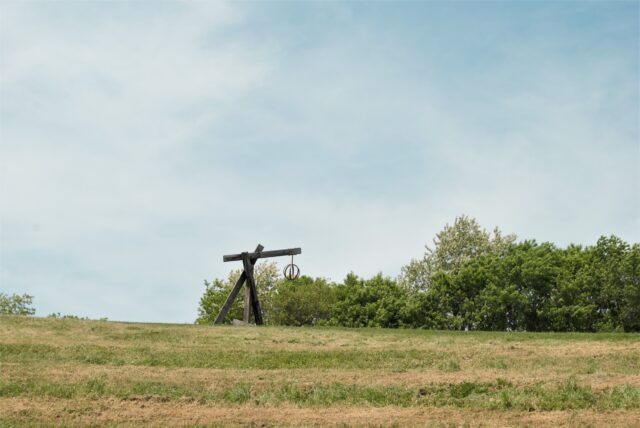
You do not need to be granted special permission to visit the park, where volunteers routinely remove invasives like bittersweet and work to maintain and improve the space by caring for its rain gardens and pollinator pathway. The asters and monarda are not yet in bloom this season, but plenty else is in this park that was part of an international pilot program in 2010.
This is not pristine wildness. It’s something else, something we should be embracing readily in the Anthropocene: transition spaces that begin to reconnect us and nature. Applaud every decision to not install more parking lots, more concrete expanses. Celebrate those who are attempting to mend, those trying to do better, those unwilling to settle for the laziness of doomerism.
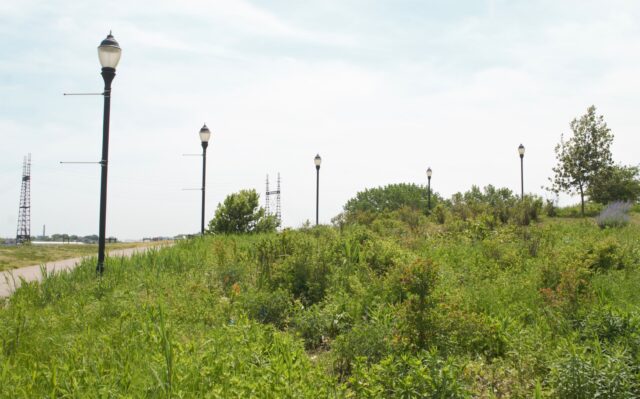
The 25-acre park is nestled along the Norwalk River, which – like just about every river in the region – has had its own history of pollution. It’s the familiar story that invokes rage to bubble up at anyone today who claims that positive changes are happening too fast. Because for so, so long, we dragged our collective feet.
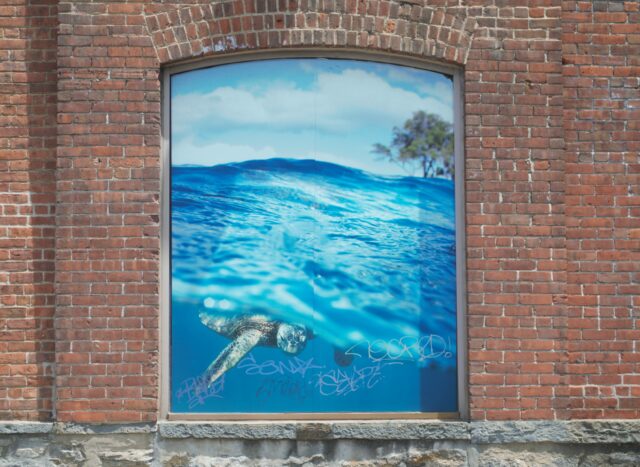
It was in 1919 that the newspapers declared Norwalk’s oyster industry to be on its “last legs,” a statement reflecting the water quality of this river, and another nearby. At the time, they were looking for a way to salvage the Naugatuck and Norwalk Rivers. Thirty years later, it seems they were unsuccessful at preventing future pollution as reports of a mass fish and eel kill in the Norwalk River were believed caused by cyanide compounds dumped in it. How does anyone look back fondly on an era when the State Water Commission could do nothing to fine polluters? There was a loophole, and it involved the SWC investigating which of the industrial plants bordering Norwalk’s River were responsible, and then sending the State Fish and Game Commission after them. But you’d think there’d have been more monitoring of natural resources from the start. This was, though, the story all over. Industry freely dumped its trash in the rivers its factories bordered, and because capitalism prioritizes greed above all else, little was done. Instead of demanding polluters stop polluting, it was deemed sensible to make zones where housing would be separated from those types of businesses, then, often, from any businesses. It took quite awhile for people to modify the question from “how do we live away from pollutants” to “how dare we pollute in the first place.” We’re not all the way there yet, but the tide has shifted.
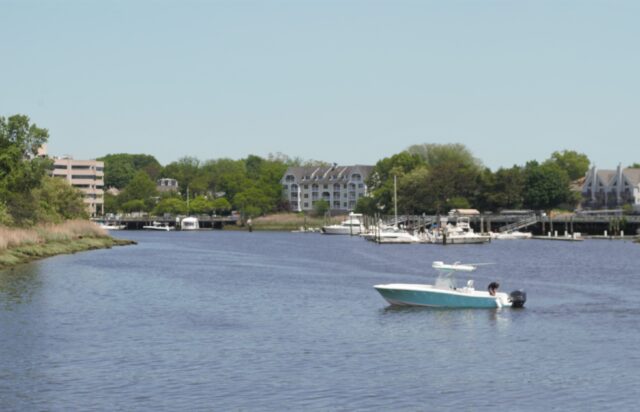
We only began to undo some harms when people were willing to correctly identify the problem.
That would not happen for awhile.
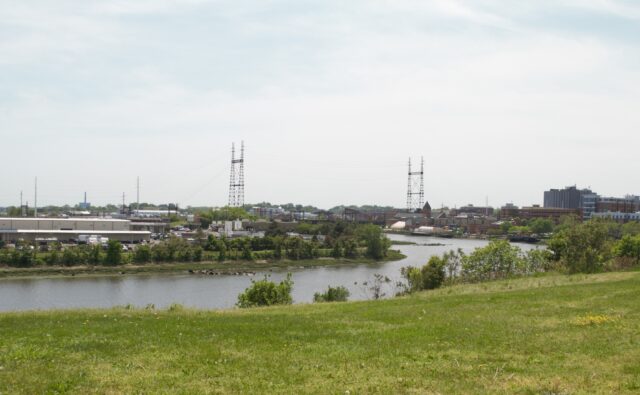
In 1971, the newly formed EPA came out firing. identifying over 100 entities as sources of waste polluting Long Island Sound – a concern because of low oxygen levels in ten harbors and rivers, including the Norwalk River. The EPA issued eight recommendations for dealing with this problem, including restoring fish and shellfish areas, and protecting them from future pollution. It was not an overnight fix. By Reagan’s administration, nearly all of Connecticut’s natural estuary oyster beds were closed to harvesting due to pollution, though the shellfish were still cultivated and relocated to cleaner, offshore beds. Oxygen levels in Long Island Sound continued to be a concern, and in 1988, nine beaches along the Sound were closed for a total of 57 days due to human sewage pollution. In this era, it was reported that egrets and swans in the Norwalk River and Harbor had discolored feathers because of water pollution from the sewage treatment plant. It was never any single cause, though. Lingering heavy metal pollution, along with stormwater runoff from parking lots and highways contributed to the problem. The retired landfill was still dribbling out its contents into the harbor. It’s as if several generations missed receiving the adage: thou shalt not defile where one eats.
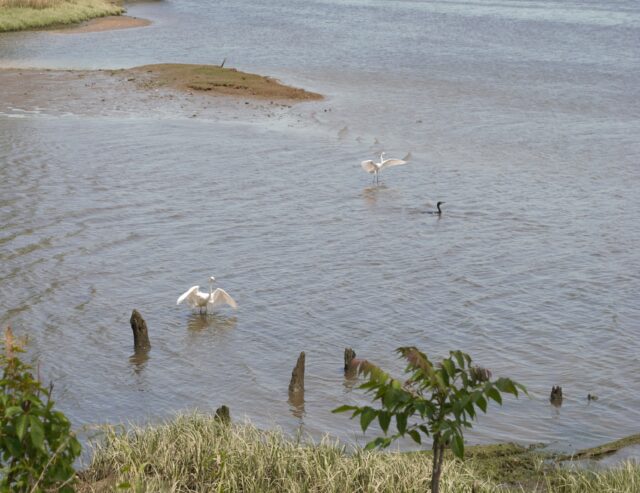
The area has rebounded in the last 25ish years, in part because of the political will to crack down on those who had been dumping raw sewage into the waterway. Major rehabilitation of natural oyster beds seem aligned with increased information about the role oysters play in assisting with decarbonization. As is explained in the Science Policy Journal, “In some marine settings, the carbon in oyster shells can be buried under the growth of subsequent generations, serving as a means to sequester carbon indefinitely. […] Seaweed farming can be combined with oyster farming operations to efficiently produce another food with a low environmental impact. In the U.S., the NGO GreenWave provides a model for restorative aquaculture that integrates bivalve aquaculture and seaweed farming.”
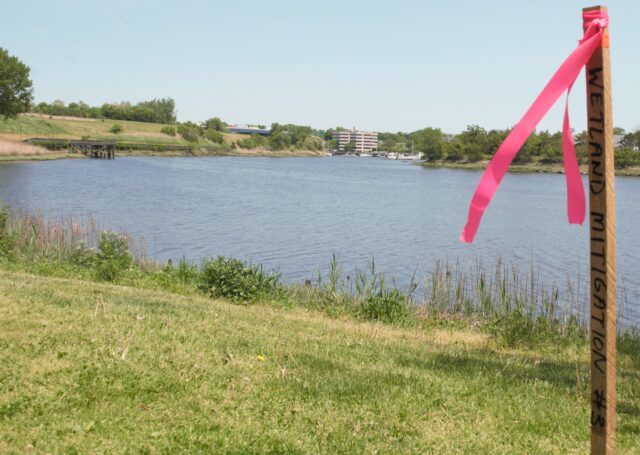
There are multiple motivations, then, to take better care of the ecosystem.
Does GreenWave sound familiar? That was co-founded by Bren Smith, owner of Thimble Island Ocean Farm in Branford. We don’t even need to look across the globe for solutions. Our own small state produces them, if only we would get out of our own way and allow for it.
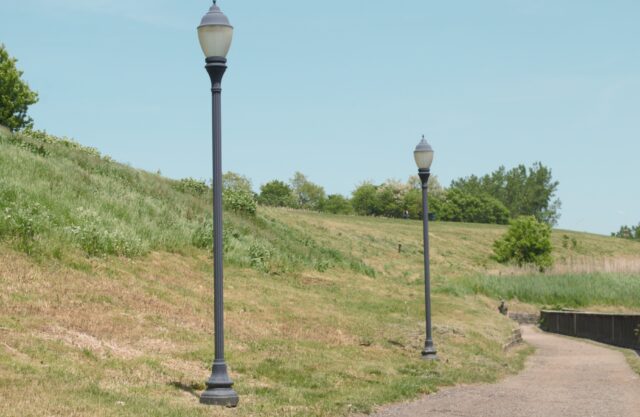
Sitting atop Oyster Shell Park, you are not gazing upon an entirely healed land- and marine-scape, but on the living promise of doing better.
It’s something we can be hopeful about because we are not in a time when we all rely on one plucky reporter to go deep undercover at a meatpacking facility, then write about it, then manage to get that published and distributed. Now, with most having multimedia devices in our pockets, and an array of social media platforms, it’s much easier to blow up the spot of terrible ideas and practices. For instance, if someone decides they want to install artificial turf fields near the Norwalk River and the area’s drinking water supplies, this can no longer just happen. People notice, speak up, and have greater potential to fight for livable environments.
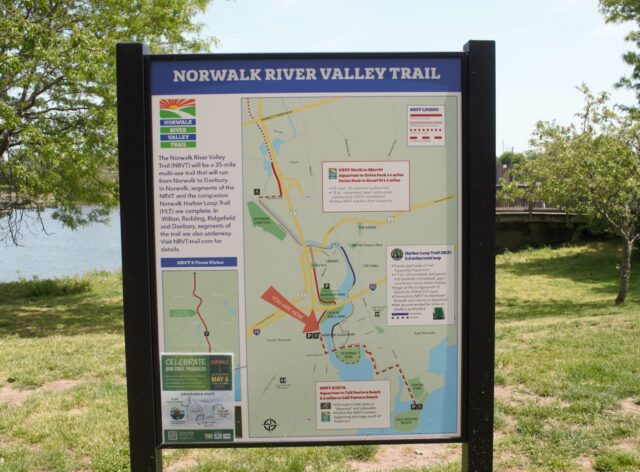
Walking to Washington Street along the Norwalk River Valley Trail takes little time or effort. There is pausing to watch the swans swimming with cygnets, the groundhog dining a few feet from the path.
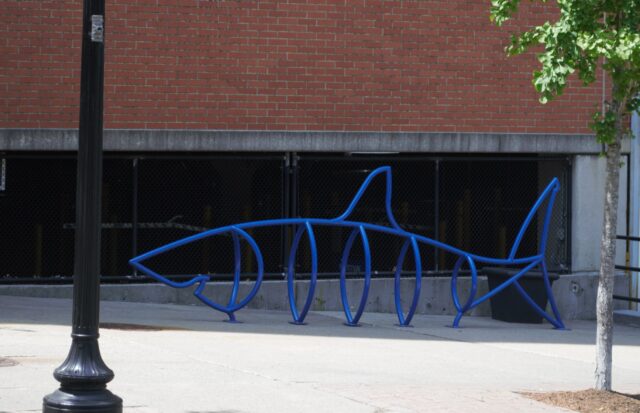
The Maritime Aquarium, between the reclaimed dump and a vibrant dining district, is not surrounded by sprawling parking lot, but by park and river. Bicycle parking is visible in front of the nearest car storage structure. Even the aquarium has taken steps toward reducing its negative impact — by eliminating much of its single-use plastics — while expanding its positive impact through citizen science programs that involve tagging horseshoe crabs and tracking diamondback terrapins. The vibe is more conservation than entertainment.
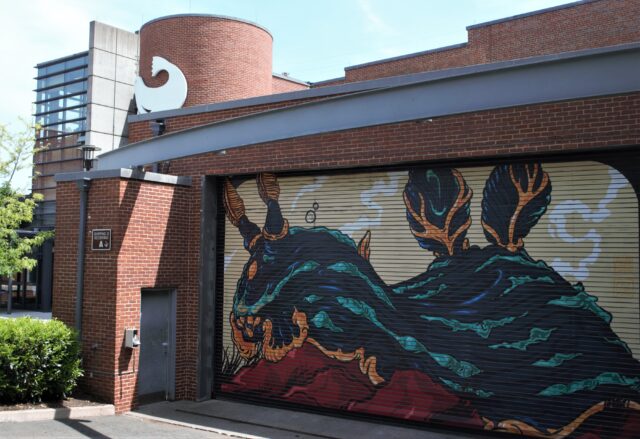
And near the beginning of a street known for its many dining options and occasional retail, there is Eco Evolution, a shop about to mark its second anniversary.
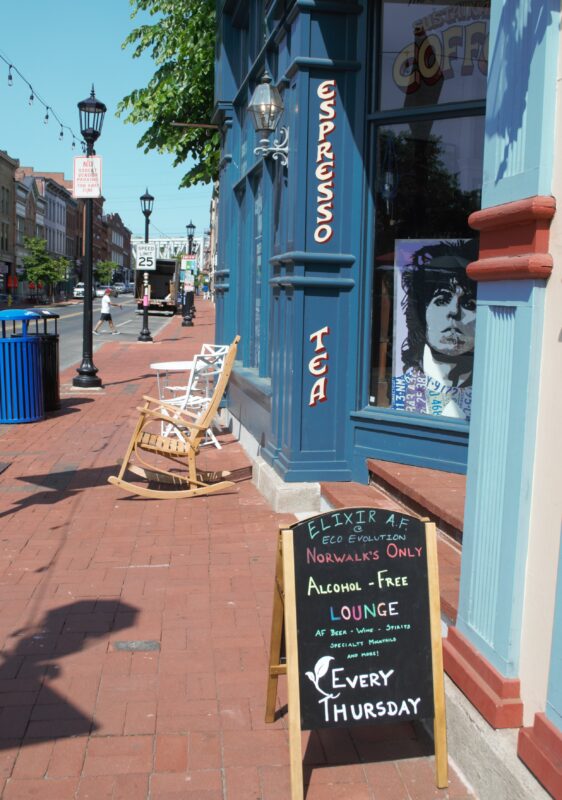
Before you enter, you both know and do not know what you are about to walk into. From a quick glance at the website, it seems like it will be a smaller, more local version of Whole Foods (Amazon).
It’s not that. It’s better.
As you enter the store, it becomes clear that this is not at all a chichi eco-boutique appealing specifically to those with Gold Coast incomes and a fetish for beige minimalism. You can exhale, and drop some of the cynicism.
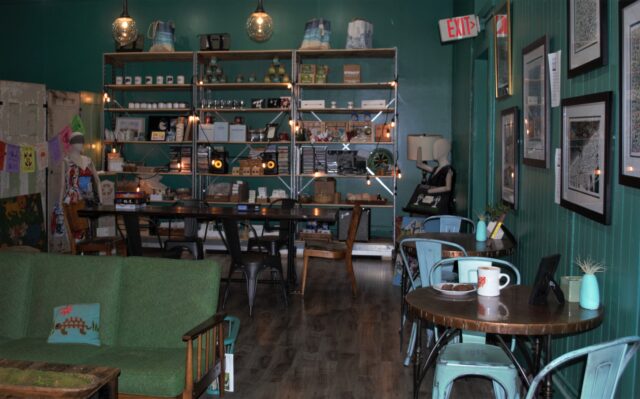
At one of the tables in the back of the store, I sat down to chat with the owner, Brad “Eco Dude” Kerner, over a mocha made from coffee roasted in nearby Bridgeport. He described the journey that led him to open a literal brick-and-mortar retail establishment during the Covid pandemic.
Those trying to live in ways that are more respectful of their habitat, he said, should not try to “change everything at once.”
For Kerner, watching A Plastic Ocean was a catalyst for him to begin changing his own habits as a consumer. With his family, he audited the amount of plastic they tossed in a week. Then, he began finding ways to make swaps. At first it was switching from plastic milk jugs to glass bottles. Then, he began making his own yogurt to sidestep the wastefulness of store-bought yogurt containers. He evaluated trips to the grocery store, realizing that one chain supermarket sold produce almost exclusively wrapped in plastic. To deal with that, he began going to other stores where shoppers have the option to get fruits and vegetables without all the extra packaging.
He documented much of this journey on social media, sharing successes, along with what has not gone off seamlessly. When there was a snag, like one of his children not welcoming a particular change with open arms, he did not scrap the whole project. He looked at other options and continued changing the things that he could.
From there, he decided to have a table at a farmers’ market to talk with others about making more sustainable options, but he said that because he was not selling something, people were generally not allowing themselves to be engaged. He noticed what was not working with his “Ask Me How!” table, and changed course.
Once he decided to open a store, he started salvaging used fixtures and so forth. By the time he secured a storefront, he had enough stock and ways to display it that the two week lead time was workable, rather than cause for panic.
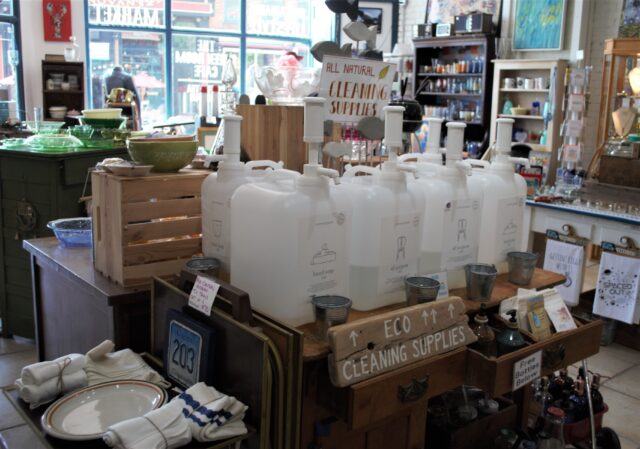
Two years in, the store fits its name well, evolving in how the space exists to fulfill Kerner’s vision and serve the community. There’s ice cream (including vegan) made less than one mile from Eco Evolution. Most products are produced in the region whether we are talking about baked goods, Treefort Naturals soap, or artwork. You can bring your own containers or use ones available in the shop to fill with hand soap and laundry detergent. There are vintage/used items from clothing to dishes to records. A range of bamboo, organic cotton, and cloth menstrual care products. There are Social Justice Game Nights. Elixir AF, an alcohol-free lounge. Sustainable Streets Happy Hour. Open mic nights, live comedy and music. Author events. A place to sit, relax, and connect with others. Kerner, you’ve done Gen X proud!
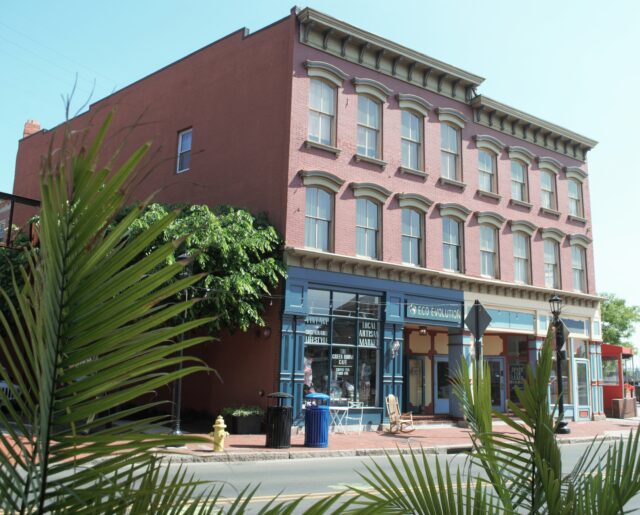
Where Norwalk has embraced progressive change is where it’s at its best.
And make no mistake, it has been changing in the last few years. In July 2019 — two years before the statewide ban went into full effect — Norwalk outlawed plastic carryout bags. Plastic straws, stirrers, and Styrofoam were restricted next, in April 2020. In both cases, Norwalk communicated and coordinated with nearby Stamford on these improvements. There are several sites where residents can drop off their food scraps. Norwalk is embracing No Mow May.
Maybe there are more advocates here. Maybe being all the way downstream motivates people to aim higher when it comes to keeping a clean environment. Either way, being here, you can feel the place generally evolving in the right direction.
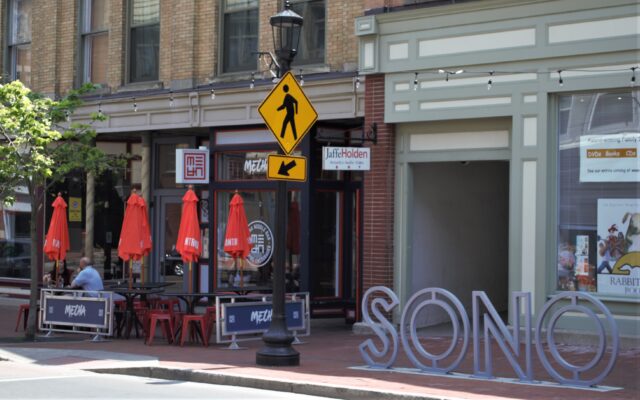
In 2021, Norwalk dropped its speed limit from 30 to 25 MPH on one block of Washington Street – which seems like a small thing, but considering how dense this area is with restaurants, and therefore, pedestrians, it was a sensible step in the right direction. It’s a difference that one can feel, and it’s one that makes for a calmer environment where people will actually be able to enjoy outdoor dining.
There is nothing about this street that tells people to rush through as fast as possible.
It’s a place to linger.
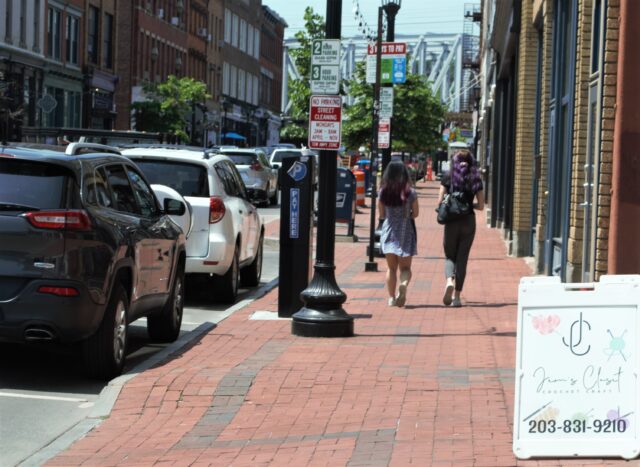
A redesign of nearby Seaview Avenue is currently in the planning phase; it will likely include a separated multi-use path along with raised intersections, with one at the Veterans Park entrance.
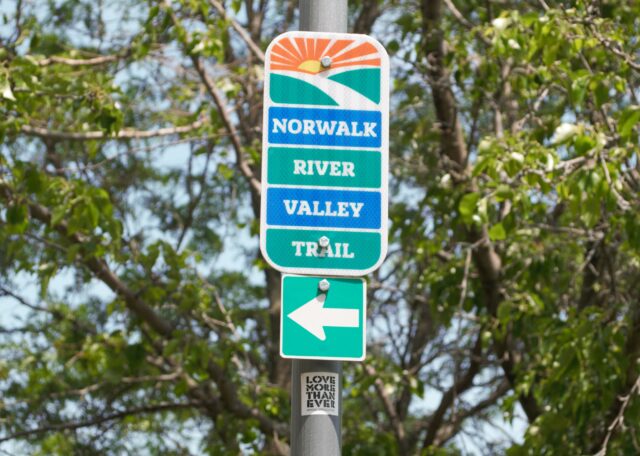
Nothing just happens. There are various nonprofits and volunteer organizations that make a place what it is, including the budding Sustainable Streets Norwalk.
Norwalk Bike/Walk AKA Norwalk Bike/Walk Commission AKA Bike Norwalk AKA Norwalk Bike Walk (did I miss any iterations?) is another group responsible for making Norwalk more attractive.
During Bike to Work Week, they set up refreshment stations for people using greener transportation, positioning themselves at both train stations, the main bus hub, and elsewhere, every day that week. Earlier in May, they held their first Open Streets event, and did so in a way that would not strand bus riders — they closed half of Calf Pasture Beach Road to motor vehicles, while leaving the other half alone, not interfering with bus routes. They didn’t only not mess with bus routes, they actually encouraged participants to arrive at the event by walking, biking, taking the Wheels Route 7 bus. Their Earth Day event? Same approach: invite people to walk, bike, or bus over.
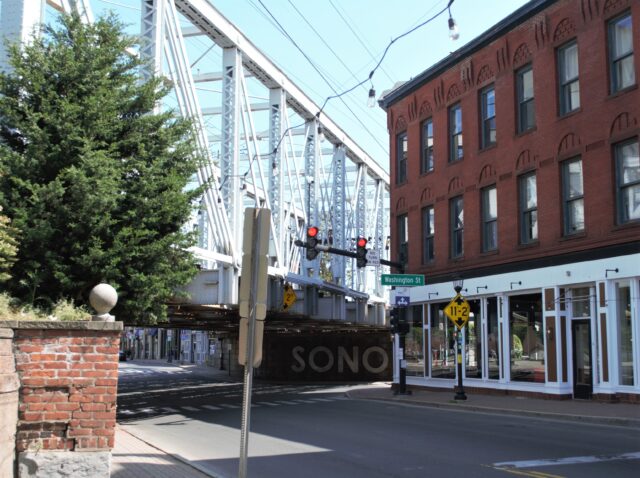
If you want people to do something, you have to begin by inviting them to do so. And, you have to make it easy for them. Want people to go to the beach from the aquarium without using a car? Give them a safe and enjoyable route. Want people to skip the plastic to-go cup? Hand them an espresso drink in a ceramic mug.
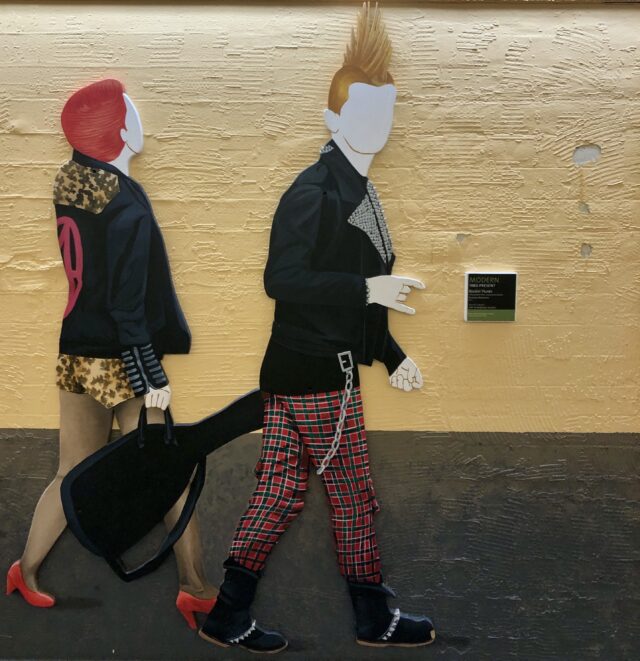
The South Norwalk train station (Metro North Railroad, New Haven Line) is a short walk from Washington Street and has frequent train service (for Connecticut). There are indoor public restrooms, a nice indoor waiting area with benches, phone charging stations, and vending machines. It’s a proper station. The nearest bus stop is on Monroe Street just outside of the train station driveway and is used by: 10-20 Westport Rd. Shuttle, Conn Ave Shuttle, Norwalk Hospital Commuter Shuttle, Merritt 7 Commuter Shuttle, and Wheels Routes 9, 10, and 11. There are bicycle racks in front of the South Norwalk Train Station and inside its garage.
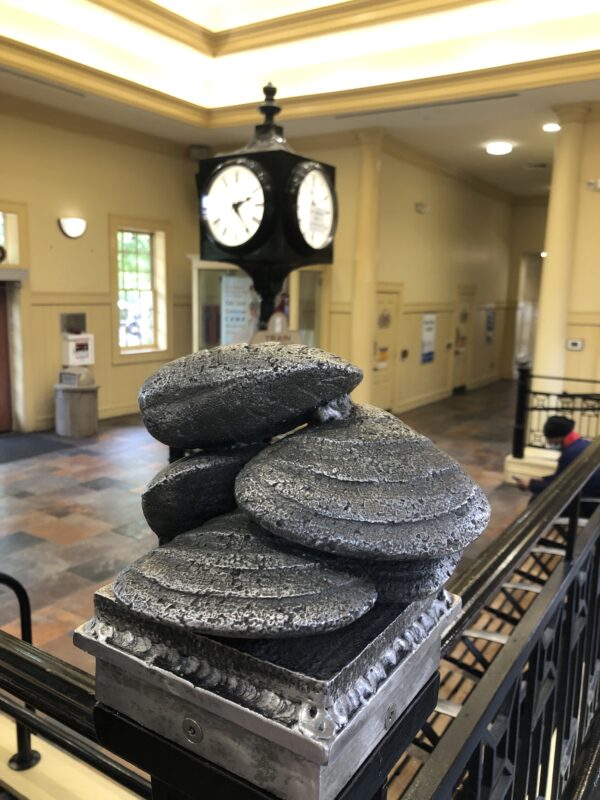
Calf Pasture Beach is a 13-minute bicycle ride from the South Norwalk train station; it’s a 10-minute ride from the East Norwalk train station.
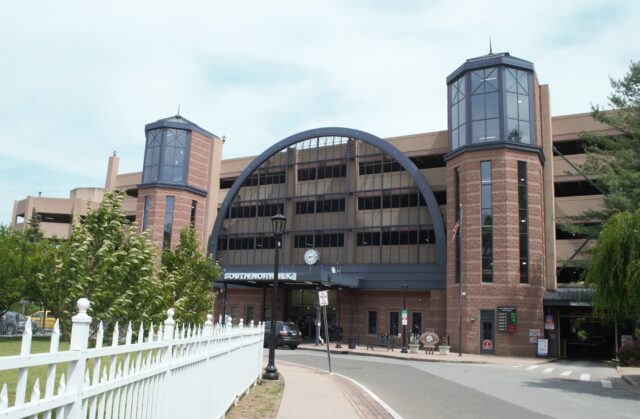
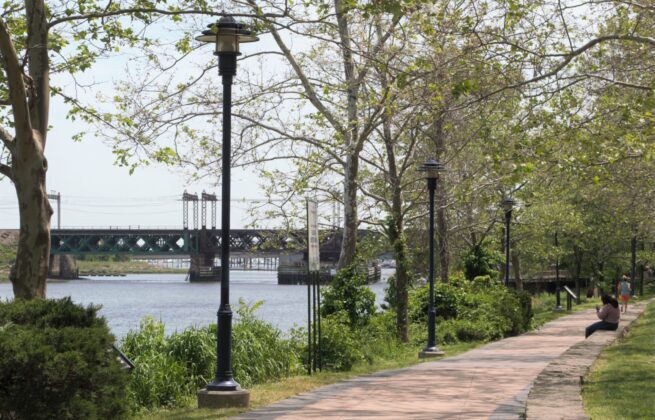
Richard Nelson
It is nice that you are traveling again and reporting back on your trips. I never knew very much about Norwalk and thank you for providing such information. I remember growing up near a factory district. Of course we had our own Turd Brook which flowed to the Salmon River which flowed to the Ct. River, and down the hill from my house were leaching ponds for the thread factory. Some days the ponds were yellow, sometimes red or blue or even black depending on the dyes that were being used. It was a forbidden zone. Turning the old dumps into parks is a wonderful idea. The trash heap hills where we sit wondering what is under us, like a strange art work we make up what builds this hill. Stopping for a moment we ponder all of the new mounds being created somewhere else to be turned into hills. We laugh to think if earth is still here in 3000 and folks look at the hills will they wonder? Will they dig? Will they say, “look at what is in these burial mounds.” I read the following about Freshkills, “The hills of Staten Island, wouldn’t have needed to be engineered if it weren’t for human heedlessness. They are monuments to a culture of affluence and disposability that was the post-war American way of life. Sadly, we haven’t changed all that much from one millennium to the next.” Happy travels this summer and know that your articles are enjoyed every much by those of us who don’t get very far now-a-days.
Kerri Ana Provost
Thanks for your comment, Richard. I wonder what percent of these hills will be made from the plastic wrap around individual cucumbers.
The Eco Dude
You are a beautiful writer. i feel like i just learned about Norwalk, and see my store (Eco Evolution) through a new lens. THANK YOU!